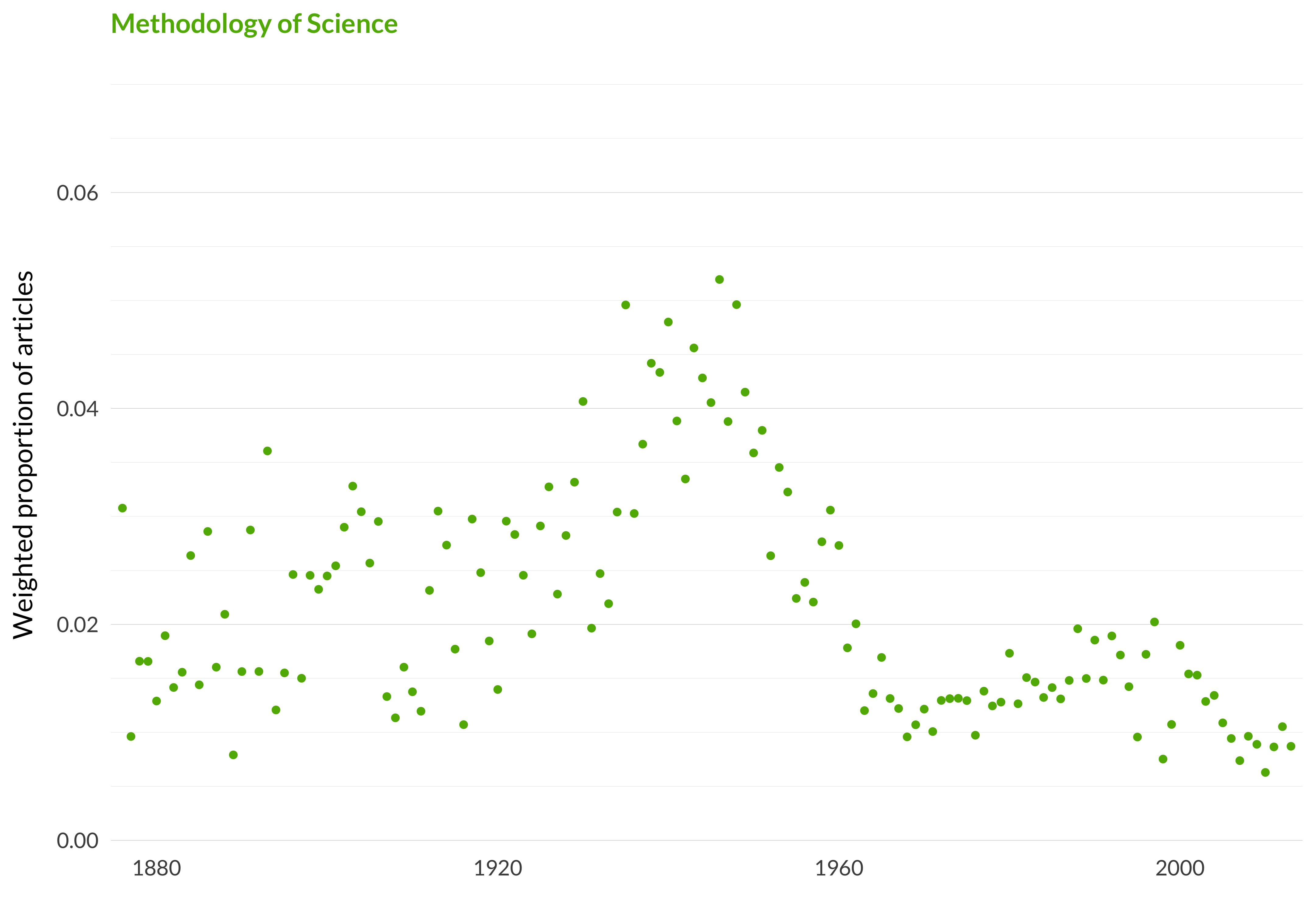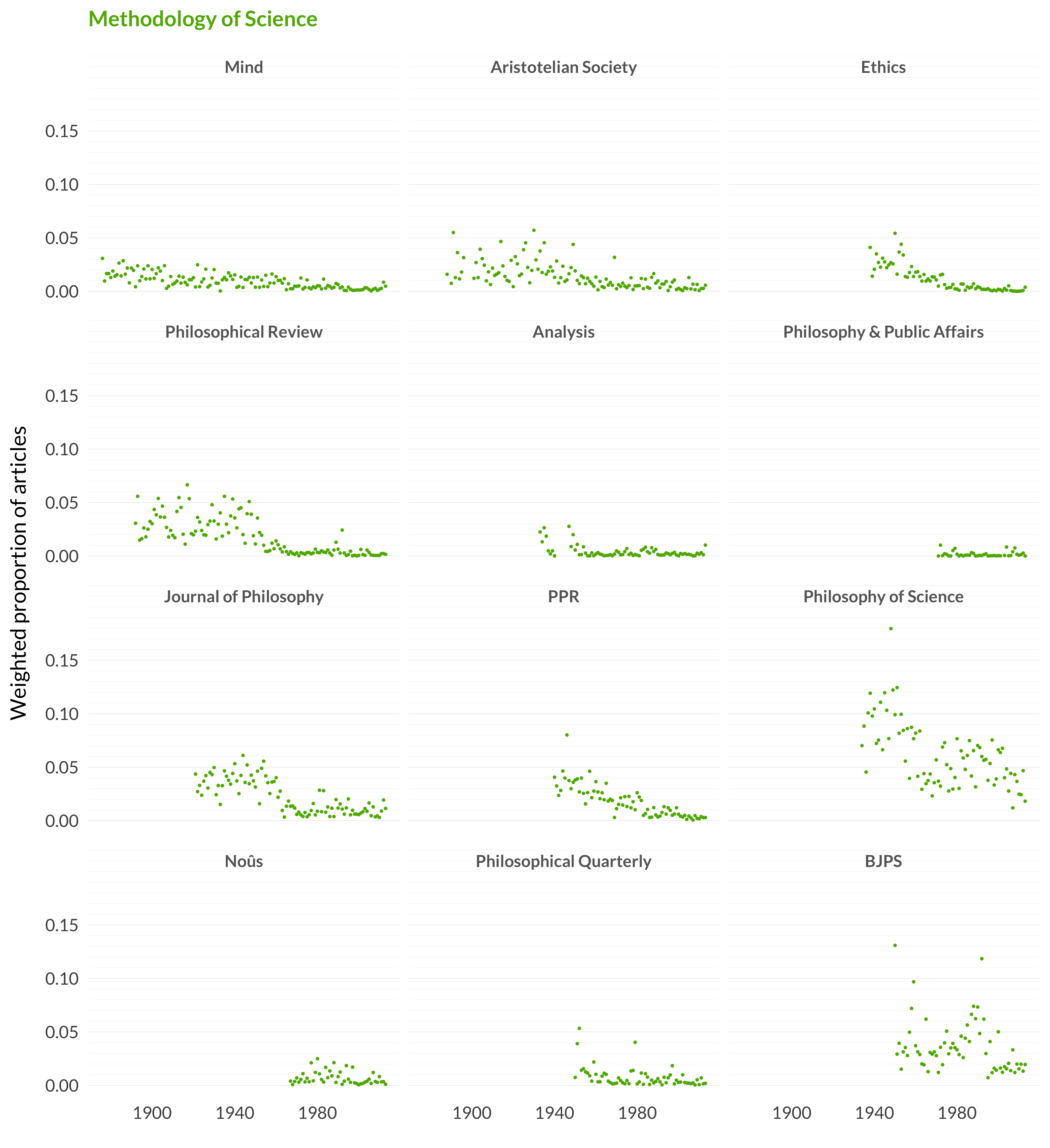2.26 Methodology of Science
Category: Philosophy of Science
Keywords: scientist, methodology, sciences, science, scientific, scientists, method, methods, methodological, discovery, investigation, popper, progress, research, inquiry
Number of Articles: 576
Percentage of Total: 1.8%
Rank: 6th
Weighted Number of Articles: 616.8
Percentage of Total: 1.9%
Rank: 5th
Mean Publication Year: 1963.4
Weighted Mean Publication Year: 1960.1
Median Publication Year: 1958
Modal Publication Year: 1948
Topic with Most Overlap: Marx (0.0391)
Topic this Overlaps Most With: Theories and Realism (0.0586)
Topic with Least Overlap: Formal Epistemology (0.00051)
Topic this Overlaps Least With: Belief Ascriptions (0.00041)

Figure 2.66: Methodology of science.

Figure 2.67: Methodology of science articles in each journal.
Comments
A more accurate, if less pithy, name for this category would be midcentury general philosophy of science. It isn’t all midcentury; if one scrolls down the list of articles in the topic there are several from recent years. But there is something midcentury about the spirit of it; it’s philosophy of science that is very much not philosophy of one or other science in particular. And as that has gone out of fashion, this topic has declined.
The statistics for this topic were very surprising. The years make sense; midcentury philosophy peaks in the midcentury. But the numbers show how misleading the graphs can be. Eyeballing the graphs makes it look like this was just bubbling along, but the numbers say it is the fifth or sixth biggest topic of the ninety. The story here, I think, is that there was much less specialization in the 1950s and 1960s, and so individual topics get a chance to grow a lot.
And the topic overlaps were surprising enough to make me recheck the code. It isn’t completely surprising that philosophy of science would intersect somewhat with Marx. “Scientific socialism” was a thing, and plenty of philosophers of science had Marxist sympathies. And there is a lot of time sensitivity to these analyses, and Marx was a big topic at the same time that this topic was bit. But that it would be the highest overlap was a surprise. And it shows how much philosophy of science has changed that formal epistemology is literally the lowest overlap.